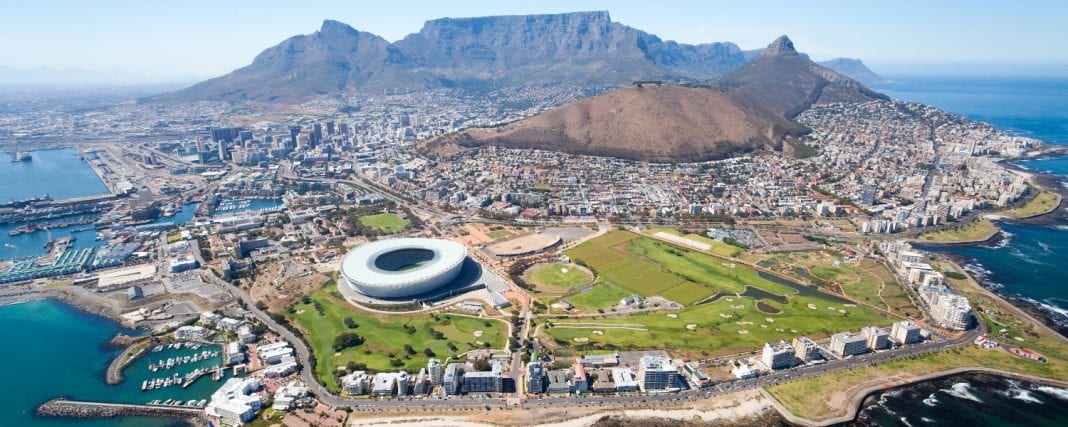World Heritage Sites represent some of humanity’s most impressive achievements and nature’s most inspiring creations. They are exceptional places that are considered to have Outstanding Universal Value – these sites are as diverse as the Pyramids of Egypt and Australia’s Great Barrier Reef – and they reflect the best of cultural and natural heritage.
As part of Canada 150, and for the first time ever, Canadians from coast-to-coast-to-coast were invited to nominate Canada’s most exceptional places to be future candidates for UNESCO World Heritage Sites.
Today, in celebration of the 150th anniversary of Confederation, the Minister of Environment and Climate Change and Minister responsible for Parks Canada, Catherine McKenna, announced the addition of eight new places to Canada’s list of candidate sites for UNESCO World Heritage recognition. Today’s announcement is the first update to Canada’s Tentative List for World Heritage Sites since 2004.
The additions to Canada’s list of candidate sites include: Anticosti Island, the most important fossil site in the world for the study of the first mass extinction event; Wanuskewin, an archaeological site that chronicles 6,400 years of history of the Great Plains of North America; and Sirmilik National Park, along with the proposed Tallurutiup Imanga/Lancaster Sound National Marine Conservation Area, one of the most biologically productive Arctic regions in the world.
The eight places added today to Canada’s Tentative List for World Heritage Sites are:
• Hecate Strait and Queen Charlotte Sound Glass Sponge Reefs (British Columbia)
• Stein Valley (British Columbia)
• Wanuskewin Heritage Park (Saskatchewan)
• Anticosti Island (Québec)
• Heart’s Content Cable Station Provincial Historic Site (Newfoundland and Labrador)
• Qajartalik (Nunavut)
• Sirmilik National Park and the proposed Tallurutiup Imanga/Lancaster Sound National Marine Conservation Area (Nunavut)
• Eight outstanding Canadian places named future candidates for UNESCO World Heritage Sites
Inscription of a site on the World Heritage List is the highest possible recognition of heritage value internationally. The benefits of World Heritage inscription will be unique to each site and may increase international recognition and tourism, lead to new partnerships in the management of the site, and promote pride in representing and safeguarding one of the world’s most precious places.
Quote
“Canada is full of hidden gems and exceptional, inspiring places. I’m grateful to the Canadians and communities across the country who shared the places they cherish to be considered as potential future World Heritage sites. To cap-off the Canada 150 celebrations, I am extremely proud to announce Canada’s newest official candidates for recognition as UNESCO World Heritage Sites. These national treasures represent the very best that Canada has to offer from natural wonders and maritime heritage to Indigenous lands and culture. These places will showcase Canada to the world.”
The Honourable Catherine McKenna,
Minister of Environment and Climate Change and Minister responsible for Parks Canada
“From the Red Basque Bay Whaling Station in Newfoundland and Labrador to the majestic Rocky Mountains to SGang Gwaay in British Columbia, Canada’s UNESCO World Heritage sites offer visitors to our country unique perspectives into Canada’s rich history and natural wonders. I am thrilled about the opportunity for more of Canada’s treasures to gain international recognition. Tourism is vital to middle-class jobs across the country. Canada’s New Tourism Vision aims to make our country one of the top-10 most visited in the world by 2025, and having more of our special places honoured and preserved will help us achieve that goal.”
The Honourable Bardish Chagger, Leader of the Government in the House of Commons and Minister of Small Business and Tourism
Quick Facts
• There are 18 World Heritage Sites in Canada, including the Rideau Canal National Historic Site.
• Canada’s Tentative List for World Heritage Sites was last updated in 2004.
• Parks Canada is the Government of Canada’s representative for the UNESCO World Heritage Convention.
• Parks Canada received 42 applications from Canadians for sites to be placed on Canada’s Tentative List for World Heritage. The full list of the 42 sites proposed for Canada’s Tentative List can be found on Parks Canada’s website.
• A Ministerial Advisory Committee, composed of seven Canadian experts in natural and cultural heritage, conservation and commemoration, reviewed all applications based on the extent to which they met World Heritage standards and recommended the sites to the Minister for addition to Canada’s Tentative List.
• Six sites remain on the Tentative List from the previous update in 2004:
o Áísínai’pi (Writing-On-Stone), Alberta
o Pimachiowin Aki, Manitoba and Ontario
o Gwaii Haanas, British Columbia
o Ivvavik/Vuntut/Herschel Island (Qikiqtaruk), Yukon
o Tr’ondëk Klondike, Yukon
o Quttinirpaaq, Nunavut
• The most recently inscribed World Heritage site in Canada is Mistaken Point, Newfoundland and Labrador, which was added to the World Heritage List in July 2016.























